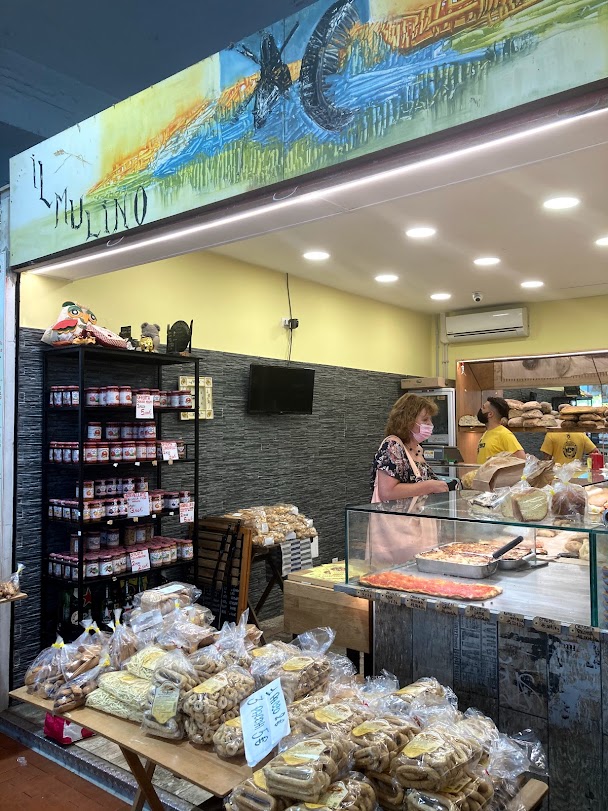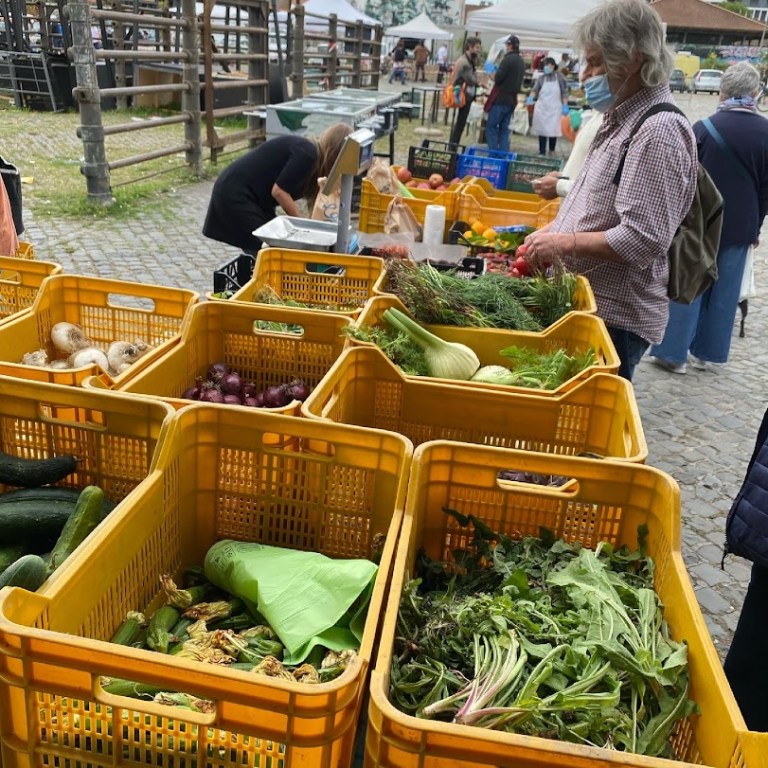In Rome, people still shop at their local market. Every “rione” (“REE-own-eh”) has a local market (Some rione can be as small as 20 streets by 20 streets). A local market is the kind of place where you will see older ladies in their house dresses pulling their shopping carts. You will never see a lady in a housedress in a grocery store. For some reason, for a certain generation, shopping at a grocery store requires putting on more formal clothing (Another great thing about Italy is that there are so many people in their 70s, 80s, 90s, and beyond). A local market will be mostly fresh produce and products with some of the other amenities available out of convenience. Clothing stalls seem to be a big thing that crops up at these markets. Most markets will also have bakeries and places for a quick bite.

Here is my list of top ten markets and why. At the bottom is the market where I like to shop.

Mercato Trionfale (“Tree-ohn-FALL-eh”), Via Andrea Doria 3 (you can read about here): This is the biggest and oldest of the neighborhood markets, completely covered, with parking underneath. There are rows upon rows of metal box stands. It’s not the most attractive place inside. Some of the nice things about this market are that there is a stall where you can bring your own bottle to fill with wine, there are zero kilometer produce vendors at the back of the market (useful to know in August when the farmers markets shut for August vacation), and there are international produce vendors at the front of the market (one or two). Trionfale is open every morning, except Sundays. The market hours are 7 am – 2 pm, but if you arrive after 1 pm, many of the stalls will be closing for lunch (But, a warning, the vendors will be hangry). Also, many of the vendors will give you samples and some even speak English (not the samples). At the entrance to the market, there is a stall that usually has porchetta (“pork-et-ah”), the famous pork roast, out for you to buy.



Nuovo Mercato Esquilino, Via Principe Amedeo 184: This market is located near Termini train station. This area of town is the “Chinatown” or Banglatown or whatever one calls the international part of town. The market is much bigger than it appears with what appears to be markets within markets. There are stalls selling produce and groceries from Bangladesh, India, Senegal, China, Kenya, Philippines, Italy, and other parts of the world. They also sell halal food. I have even seen rambutan for sale here. There are also fresh fish stalls and the local coffee bar truly feels like another part of the world where this is a refuge for men (there are women in this one, by the way). The market, as well as the whole area, does not feel as clean as one might like but I guess that adds to the charm. It reminds me a bit of the markets of Bangladesh, which could all have been improved with a change of lightbulbs to something less neon and stark.



Nuovo Mercato Testaccio, Via Benjamino Franklin: This market is quite different than all the others, also perhaps the cleanest of the markets, or at least feels so because of the good lighting. The roof allows in light and the stalls are painted white giving the market a new feel. It is also fairly new as it was relocated here in 2012. The old version of this market was the largest butchery in Europe. The unusual thing about this market is that it has many eateries making it like a food hall, a trend that has not really taken off in Rome. Due to the food stalls and the eating area in the middle, this place is popular with food tours and lunchers. Testaccio market also is the location of a recycle food program where the unsold food is given to the needy. This is the most “way trendy” of the places. Lots of food tours and publicity from international magazines and TV shows.

Mercato Rionale Coperto Nomentano, Piazza Alessandria: This market is inside an attractive building from the 1920s, with a high dome. This market has both produce, pizzerias, and some stalls with clothes outside. It is not huge but a good size for a local market. You can find almost anything you want in here. I think I bought a paring knife and a bowl. There are several bakery stalls in this market as well.

Mercato Italia, Via Catania 70: This is a large market in a part of town that is not touristy and not international. Also, it has a bakery run by two young guys who play rock music and make excellent lasagne. It was like visiting Rome as one might imagine it was. Zero tourists. I’ll be back.


Mercato di San Cosimato (Trastevere), Piazza San Cosimato: This market is slightly different from the others because it is outside in a square in Trastevere. There are some permanent box stalls but the majority of the stalls are fruit and vegetable stands that set up some tables and umbrellas every day.

Mercato di Campo de’ Fiore, Piazza Campo de’ Fiore: Surely the most romantic sounding of all the markets, located in a former field of flowers. This is the uber touristy local market. In the morning, the hold-out vegetable sellers are still there, slowly losing out to the ever dominant tourist tat and limoncello vendors, toasted nuts, and fresh-juice-at-five-euro-a-glass touters. This is an outdoor market in a square that was used for executions (people seem to ignore the statue of the hooded figure) because it was the only square without a church (which to me is the opposite reason as far as I can see). The location can’t be beat. Also, some of the vendors sell exotic items like lychee and round cucumbers from Apulia. In the evening, this square becomes a boozy open air bar, sticky with spilt drinks and hair product from the 80s.

Mercato Rionale Monti, Via Baccini 36: This is the smallest and oldest of the local markets, but it is also quite special. In the center, it has a reading area with shelves with books, a children’s area, and a few tables. The book selection is both in English and Italian. This market also has a pasta stall with a window where there is active pasta making in action. Although this market is basically a square, it even has a gift shop, a speciality Apulian stand, a fish vendor, a butcher, baker, two vegetable stands, a basic grocery stall, and a coffee machine that stands in for a coffee bar. This market is also open until the evening on Thursdays and Fridays, making it even more convenient for the locals.

Mercato Rionale Prati, Piazza dell’Unità 53/Via Cola di Rienzo: This is another 1920s building high to the ceiling and attractive. Another market that is not huge but big enough. It is a bit overgrown by the abutting buildings but you can find it if you try.

Città dell’Altra Economia, Via di Monte Testaccio (not far south from Testaccio Market): This market is part of a much larger event space. The market is in the large open space and comprises ten to 20 market stalls. If you live near here, then one could shop here. Especially if you like the outdoors farmers market atmosphere.


To read more about the markets of Rome, this site is a good place to start. There are many other local markets but you get the idea.

Now to the most famous farmers’ market, a zero kilometer market, where I like to shop.

Campagna Amica (Coldiretti is the cooperative that runs these markets all over Italy) in Via San Teodoro 76, Sat & Sun, 8-3, sometimes called the Farmers Market at Circus Maximus because it is located nearby: This zero kilometer market is as local as you can get for Rome. Everything produced here, from milk, meat, artichokes, and oil, and all are from within 100 kilometers of Rome.
In the back courtyard, there are a couple of eateries, including a fried seafood food truck. If you follow me on Instagram, then you will have seen that I like to check out this market every few weeks to see what is in season. It is not my local market, but it is all about local food. This market attracts a lot of TV crews and special events.


As I go to more markets, I may update this article but this gives you a start if you wish to go to a local market. In general, it is better to go to the market at 9 am if you want to avoid the crowds. 11 am if you like the crowds. After 1 pm, forget it.
